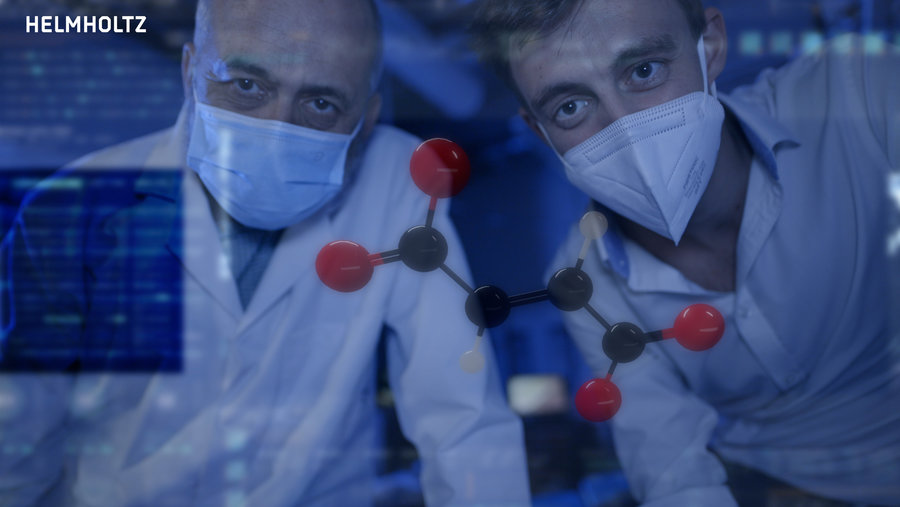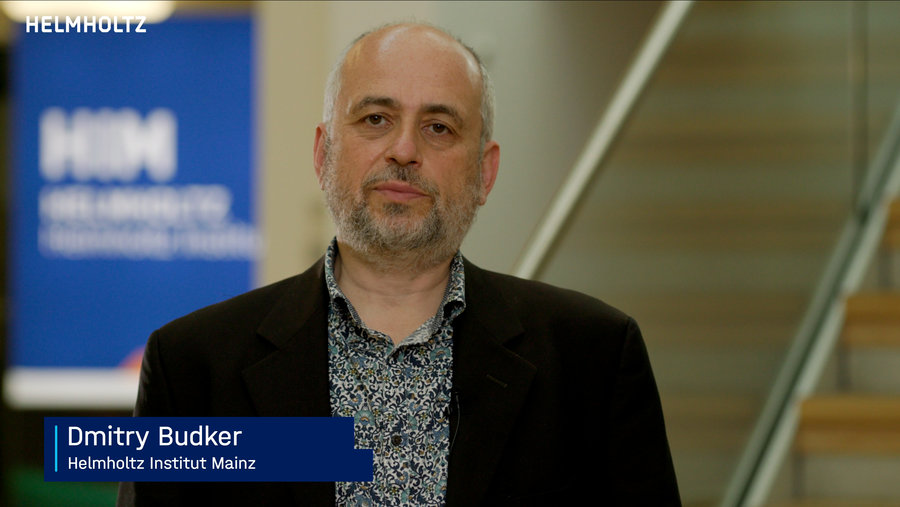Erwin Schrödinger Prize 2021: Breakthrough for nuclear magnetic resonance and magnetic resonance imaging
16.02.2022 |
The “Erwin Schrödinger Prize 2021 — The Stifterverband Science Award” goes to an international team at the Helmholtz Institute Mainz HIM, a cooperation of the GSI Helmholtz Centre for Heavy Ion Research and the Johannes Gutenberg University Mainz: With the cost-effective and extraordinary amplification of magnetic resonance signals, the experts have developed a technique that has promising uses in analytics.
For the production of a newly developed and improved contrast agent for magnetic resonance imaging (MRI) with hydrogen gas, the scientists* Dmitry Budker (physicist, HIM), James Eills (chemist, HIM), John Blanchard (chemist, HIM), Danila Barskiy (physical chemist, HIM), Kerstin Münnemann (chemist, University of Kaiserslautern), Francesca Reineri (chemist, University of Turin), Eleonora Cavallari (pharmaceutical and biomolecular scientist, University of Turin), Silvio Aime (biological scientist, University of Turin), Gerd Buntkowsky (physical chemist, TU Darmstadt), Stephan Knecht (physicist, TU Darmstadt and NVision, Ulm), Malcolm H. Levitt (chemist, University of Southampton) and Laurynas Dagys (chemist, University of Southampton) receive the Erwin Schrödinger Prize, which is endowed with 50,000 euros.
Nuclear magnetic resonance is one of the standard analytical methods used to determine the structure and dynamics of materials and living objects. Including magnetic resonance imaging, the method is used in chemistry, biochemistry and medicine, among other fields. In both methods, liquids are particularly well suited as contrast agents for examination. However, the methods used to date have reached their limits: The interaction of nuclear spins with their environment is very weak and the methods therefore have low sensitivity. This is where the new development comes in: To overcome this limitation, researchers have developed a series of so-called “hyperpolarization techniques”. These are chemical and physical techniques that can be used to prepare atoms and molecules in such a way that their magnetic resonance signals are amplified by a factor of about a million at a low cost.
Hyperpolarization techniques are complex and can currently only be used in a few clinics worldwide. This project only became possible thanks to the cooperation of a team of chemists, physicists, engineers, biologists and clinical practitioners. The team is made up of experts from Germany, England, Italy and the USA, and includes the GSI Helmholtz Centre for Heavy Ion Research, the Helmholtz Institute Mainz, the Technical University of Darmstadt, the Technical University of Kaiserslautern, the University of Southampton and the University of Turin. The Helmholtz Institute Mainz, where the award winners conduct research, is jointly supported by the GSI Helmholtzzentrum für Schwerionenforschung in Darmstadt and the Johannes Gutenberg University Mainz.
“The goal of our scientific work is to provide easy-to-produce, safe and long-lived hyperpolarized molecules for both medical applications and research purposes,” says Dmitry Budker, Professor of Experimental Atomic Physics at the PRISMA+ Cluster of Excellence at Johannes Gutenberg University Mainz (JGU) and Section Head at the Helmholtz Institute Mainz (HIM). “Our method represents a major step and a decisive improvement in this process. We were able to achieve this through interdisciplinary and transnational collaboration. We are very pleased and proud that our long-standing and intensive research collaboration has been recognized with the prestigious Erwin Schrödinger Prize.”
Professor Paolo Giubellino, Scientific Director of GSI and FAIR, says: “The impressive results of this outstanding research team vividly demonstrate the overarching importance of close global networking in the scientific community. The Helmholtz Institute Mainz offers the researchers in this special collaboration an environment to enable top performance. I am therefore delighted and proud that this great scientific achievement is being honored with the Erwin Schrödinger Prize and convey my congratulations to all the researchers involved.”
“The impressive research work of this international winning team shows once again what science can achieve when it collaborates across disciplines and national borders,” says Otmar D. Wiestler, President of the Helmholtz Association. “The enormous amplification of magnetic resonance signals represents a crucial improvement for medical applications. I extend my heartfelt congratulations to the award winners.”
“The internationally staffed research team has done an outstanding job of successfully bringing together expertise from different areas of the natural sciences,” said Michael Kaschke, president of the Stifterverband. “This highly committed, interdisciplinary approach has improved magnetic resonance imaging analytics for medicine and research in a decisive way. It is precisely these outstanding projects that we want to honor and make visible with this award.”
With the Erwin Schrödinger Prize, Helmholtz and the Stifterverband jointly honor outstanding scientific achievements. The prize is intended to honor interdisciplinary research that has been achieved in border areas between different subjects of medicine, natural sciences and engineering and with participation of representatives of at least two disciplines. (CP)



















